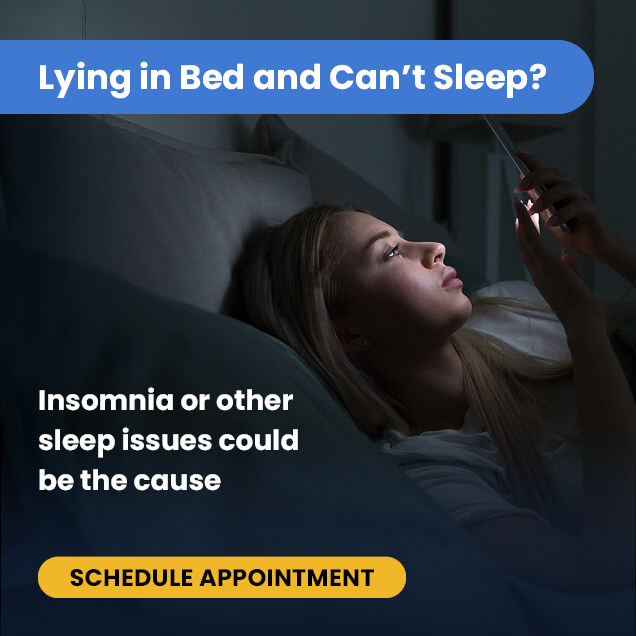Causes | Symptoms | Risk Factors | Diagnosis | Treatment
Overview
If you get most of your sleep through napping and unable to sleep throughout the night, you might have one of the six circadian sleep-wake disorders known as irregular sleep-wake disorder (ISWD).
Your circadian rhythm, or the body’s 24-hour biological clock, controls sleep and wakefulness. However, with ISWD, your circadian rhythm is off, leading to more daytime naps and less restorative nighttime sleep.
Keep reading to find out more about ISWD, including the causes, risk factors, and treatment options.
ISWD Explained
The circadian rhythm plays a significant role in helping the body function properly. Its most important job is to regulate when you sleep and wake up; however, it also helps keep your body temperature where it should be and regulates your appetite.
If you have ISWD, your circadian rhythm is out of sync, at least where it involves sleep. You may feel the need to take short naps throughout the day instead of having a full night’s sleep. Also, if your sleep is fragmented, your sleep quality can be poor and unrefreshing.
ISWD can lead to developing sleep habits similar to those of a baby. Infants tend to sleep for a couple of hours, wake up for a few hours, and then go back to sleep. You may feel tired during the day and then feel like you have insomnia at night.
One of the significant aspects of ISWD is that even though your sleep pattern is fragmented, the amount of sleep you get over 24 hours is typically considered normal. Most people with the disorder find that they usually get the most sleep between 2-6 a.m.[1]
Causes
The incidence of ISWD is relatively rare with some studies not identifying it as a distinct disorder.[2][3] It can affect people who have issues concerning brain functionality and those who don’t have a set routine, such as people who travel a lot through multiple time zones or constantly changing work shifts.
As you get older, you may experience ISWD more often. Age itself doesn’t cause the condition, but symptoms can appear as manifestations of neurological disorders, like Alzheimer’s disease. Studies show that neurodegenerative disorders can lead to disturbed sleep.[4][5][6] However, poor sleep may be a precursor of dementia,[7][8][9] exacerbating dementia’s symptoms and expediting cognitive decline.
It appears that ISWD can develop due to abnormalities in certain areas of the brain, specifically the pineal gland and the suprachiasmatic nucleus.[10] These abnormalities, which are usually associated with the aging process, can make it harder for the body’s circadian rhythm to work correctly.
Time cues, known as zeitgebers, help the body maintain a 24-hour circadian rhythm; however, when these cues are disrupted so is your circadian rhythm. Factors that can precipitate and exacerbate symptoms of ISWD include insufficient bright light throughout the day, and social and work obligations that interfere with a sleep schedule.
Symptoms
- Frequent napping during the day
- Daytime sleepiness
- Shallow, intermittent sleep
- Delayed sleep onset at night
- Fragmented sleep at night
Risk Factors
It appears that the most significant risk factor for developing ISWD is age. However, it’s more common for ISWD to be associated with the pathophysiologic changes leading to neurological disorders. The condition can also be associated with traumatic brain injury.
Researchers believe that the suprachiasmatic nucleus is compromised in people with Alzheimer’s, putting them at risk for ISWD. Alzheimer’s patients spend most of their days in nursing homes and are exposed to less natural light during daylight hours as a result, which exacerbates symptoms.
There is also a possibility that genetics could increase the risk of ISWD; however, there needs to be more research to find a more definitive link.[11]
Risk Factors include:
- Advanced age
- Neurological disorders, like Alzheimer’s
- Brain injury
- Weak environmental cues, like minimal exposure to bright morning light
Diagnosis
Four criteria must be met for someone to be diagnosed with ISWD:
- You have a recurrent pattern of disrupted sleep within 24 hours. You must either nap excessively during the day, be unable to sleep at night, or experience both.
- You have these symptoms for three months or longer.
- Testing reveals that there is no period during the day where you sleep for several hours at a time. You need to experience at least three bouts of irregular sleep within a 24-hour period.
- Your sleep disorder can’t be explained by substance abuse, a medical or neurological problem, a mental issue, the use of prescription medications, or another type of sleep disorder.[12]
Treatment
There are two main methods of treating ISWD: light therapy and medication. The purpose is to help promote extended sleep at night and extend wakefulness during the daytime hours.
Light therapy involves exposing patients to light in the daytime and avoiding bright light in the evening and nighttime hours, helping resync the circadian rhythm. In one study, researchers exposed Alzheimer’s patients to two hours of bright light during the morning for four weeks. According to the results, the patients napped less during the day and slept longer at night.[13]
Another study showed that light therapy and the drug melatonin increased wakefulness during the day and led to longer nighttime sleep.[14]
Talk to Your Doctor
The best way to address ISWD is to get medical help. Talking to a medical professional will be your best chance of getting the refreshing, restful sleep you’ve been missing.
References:
- Wagner DR. Disorders of the circadian sleep-wake cycle. Neurol Clin. 1996;14(3):651–70. doi: 10.1016/s0733-8619(05)70278-4. PMID: 8871981. Retrieved from <https://pubmed.ncbi.nlm.nih.gov/8871981/>
- Zee, P. C., & Vitiello, M. V. (2009). Circadian Rhythm Sleep Disorder: Irregular Sleep Wake Rhythm Type. Sleep medicine clinics, 4(2), 213–218. https://doi.org/10.1016/j.jsmc.2009.01.009
- Sack, R. L., Auckley, D., Auger, R. R., Carskadon, M. A., Wright, K. P., Jr, Vitiello, M. V., Zhdanova, I. V., & American Academy of Sleep Medicine (2007). Circadian rhythm sleep disorders: part II, advanced sleep phase disorder, delayed sleep phase disorder, free-running disorder, and irregular sleep-wake rhythm. An American Academy of Sleep Medicine review. Sleep, 30(11), 1484–1501. https://doi.org/10.1093/sleep/30.11.1484
- Bliwise D. L. (2004). Sleep disorders in Alzheimer’s disease and other dementias. Clinical cornerstone, 6 Suppl 1A, S16–S28. https://doi.org/10.1016/s1098-3597(04)90014-2
- Vitiello, M. V., & Prinz, P. N. (1989). Alzheimer’s disease. Sleep and sleep/wake patterns. Clinics in geriatric medicine, 5(2), 289–299.
- Tandberg, E., Larsen, J. P., & Karlsen, K. (1998). A community-based study of sleep disorders in patients with Parkinson’s disease. Movement disorders : official journal of the Movement Disorder Society, 13(6), 895–899. https://doi.org/10.1002/mds.870130606
- Nebes, R. D., Buysse, D. J., Halligan, E. M., Houck, P. R., & Monk, T. H. (2009). Self-reported sleep quality predicts poor cognitive performance in healthy older adults. The journals of gerontology. Series B, Psychological sciences and social sciences, 64(2), 180–187. https://doi.org/10.1093/geronb/gbn037
- Xu, L., Jiang, C. Q., Lam, T. H., Liu, B., Jin, Y. L., Zhu, T., Zhang, W. S., Cheng, K. K., & Thomas, G. N. (2011). Short or long sleep duration is associated with memory impairment in older Chinese: the Guangzhou Biobank Cohort Study. Sleep, 34(5), 575–580. https://doi.org/10.1093/sleep/34.5.575
- Ferrie, J. E., Shipley, M. J., Akbaraly, T. N., Marmot, M. G., Kivimäki, M., & Singh-Manoux, A. (2011). Change in sleep duration and cognitive function: findings from the Whitehall II Study. Sleep, 34(5), 565–573. https://doi.org/10.1093/sleep/34.5.565
- Crowley, SK, Youngstedt, SD. Pathophysiology, Associations, and Consequences of Circadian Rhythm Sleep Disorder. Encyclopedia of Sleep 2013;16-21. doi: 10.1016/B978-0-12-378610-4.00266-7. Retrieved from <https://www.sciencedirect.com/science/article/pii/B9780123786104002667>
- Sack, Robert L, et al. Circadian Rhythm Sleep Disorders: Part II, Advanced Sleep Phase Disorder, Delayed Sleep Phase Disorder, Free-Running Disorder, and Irregular Sleep-Wake Rhythm: An American Academy of Sleep Medicine Review. Sleep. 2007 Nov;30(11):1484-501. doi: 10.1093/sleep/30.11.1484. PMID: 18041481. Retrieved from <https://pubmed.ncbi.nlm.nih.gov/18041481/>
- American Academy of Sleep Medicine. International Classification of Sleep Disorders, 3rd ed, American Academy of Sleep Medicine, Darien, IL 2014. Copyright © 2014 American Academy of Sleep Medicine.
- Zee, Phyllis C, Vitiello Michael V. Circadian Rhythm Sleep Disorder: Irregular Sleep Wake Rhythm Type. Sleep Med Clin. 2009 Jun 1; 4(2): 213–218.doi: 10.1016/j.jsmc.2009.01.009. PMID: 20160950. Retrieved from <https://www.ncbi.nlm.nih.gov/pmc/articles/PMC2768129/>
- Zee, Phyllis C, Vitiello Michael V. Circadian Rhythm Sleep Disorder: Irregular Sleep Wake Rhythm Type. Sleep Med Clin. 2009 Jun 1; 4(2): 213–218. doi: 10.1016/j.jsmc.2009.01.009. PMID: 20160950. Retrieved from <https://www.ncbi.nlm.nih.gov/pmc/articles/PMC2768129/>






